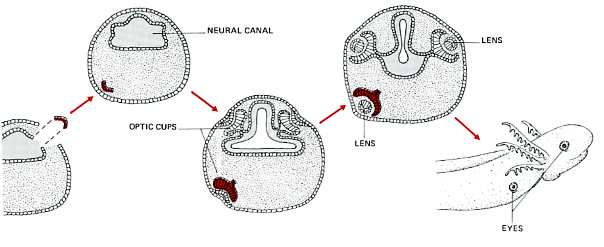The German embryologist Hans Spemann was a master at microsurgery. One of his experiments on salamander embryos is outlined here.

As the brain develops, two masses of nervous tissue, the optic cups, grow forward from it. As these near the anterior surface of the embryo, skin cells just in front of them differentiate to form lenses. The optic cups become the retinas of the finished products, the eyes.
Spemann transplanted an optic cup form one salamander embryo under the skin of the flank of a recipient embryo. Ectodermal cells pushed in from the skin and differentiated into a lens. Ultimately an eye (nonfunctional) grew there on the flank.
Spemann used the term induction to describe the ability of a tissue to alter the pathway of differentiation of a nearby tissue.
| Link to The Organizer — another example of induction discovered by Spemann's student Hilde Mangold. |
| Link to two other examples of insights gleaned from Spemann's microsurgical skills. |
| Welcome&Next Search |